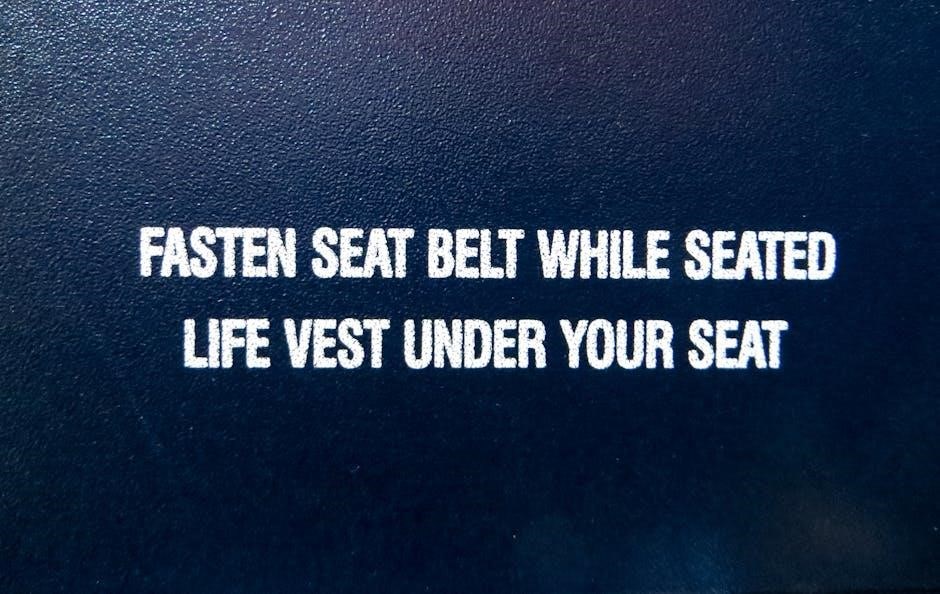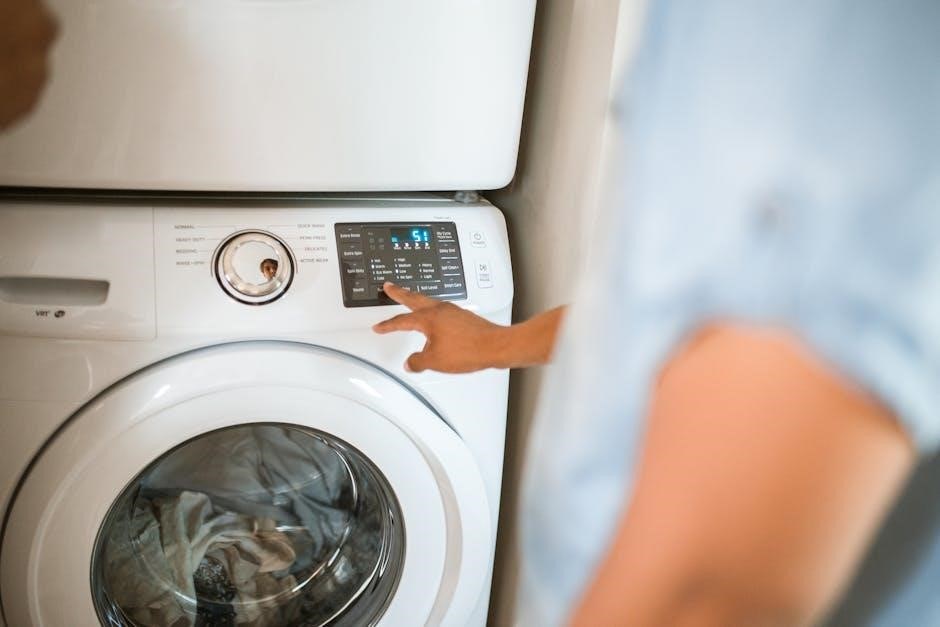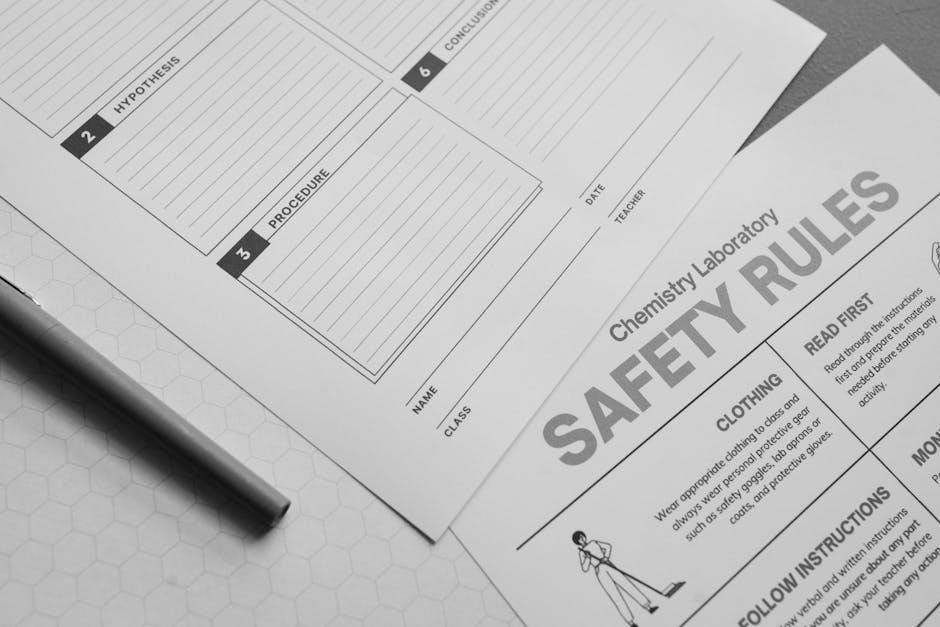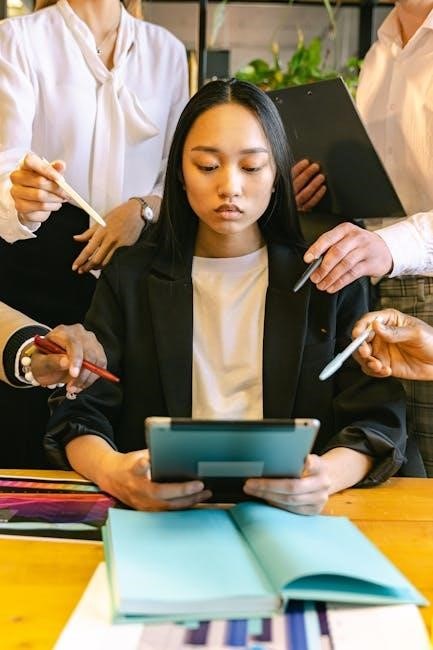Discover expertly crafted Linux Cloud Engineer resume templates in PDF format, designed to help you showcase your technical skills and experience effectively in 2025.
1.1 Importance of a Well-Structured Resume for Linux Cloud Engineers
A well-structured resume is crucial for Linux Cloud Engineers to stand out in a competitive job market. It ensures clarity, professionalism, and alignment with ATS systems. Highlighting technical skills, certifications, and quantifiable achievements in cloud infrastructure and Linux administration is essential. A clear format helps recruiters quickly identify your expertise in managing servers, container orchestration, and hybrid cloud environments. Using action verbs and industry-specific keywords enhances visibility. A polished resume demonstrates attention to detail and commitment to excellence, making it a vital tool for securing interviews in 2025.
1.2 Overview of the Role of a Linux Cloud Engineer
A Linux Cloud Engineer specializes in managing and securing cloud infrastructure, ensuring seamless integration of Linux systems with cloud platforms like AWS, Azure, and GCP. Responsibilities include deploying and maintaining applications, automating tasks using Python or Bash, and optimizing cloud resources. Proficiency in containerization tools like Docker and Kubernetes is essential, along with experience in CI/CD pipelines. The role requires a strong understanding of networking, virtualization, and DevOps practices. By leveraging these skills, Linux Cloud Engineers ensure high availability, scalability, and security in cloud environments, driving business growth through efficient system management.

Key Sections of a Linux Cloud Engineer Resume
A well-structured Linux Cloud Engineer resume includes Contact Information, Professional Summary, Technical Skills, Professional Experience, Education, and Certifications, ensuring clarity and relevance to the role.
2.1 Contact Information and Professional Summary
Begin your resume with clear contact information, including your name, email, phone number, and LinkedIn profile. A strong professional summary highlights your experience, skills, and career goals. Use action verbs and ATS-friendly language to describe your expertise in Linux and cloud technologies. Keep it concise, focusing on measurable achievements and key qualifications. This section sets the tone for your resume, ensuring recruiters quickly understand your value as a Linux Cloud Engineer.
2.2 Technical Skills and Certifications
Highlight your technical expertise by listing relevant skills and certifications. Include Linux administration, cloud platforms (AWS, Azure, GCP), containerization (Docker, Kubernetes), and scripting languages (Python, Bash). Certifications from recognized bodies like AWS Certified Solutions Architect or Linux Foundation add credibility. Use bullet points for clarity and ensure alignment with the job description to maximize ATS compatibility. This section demonstrates your technical proficiency and readiness for cloud engineering roles.
2.3 Professional Experience and Achievements
Detail your work history with a focus on Linux and cloud-related responsibilities. Use bullet points to describe job roles, achievements, and projects. Quantify accomplishments, such as “Reduced server downtime by 30% through automation” or “Designed a hybrid cloud infrastructure for a global enterprise.” Highlight specific tools and technologies used, such as Docker, Kubernetes, or AWS. Emphasize problem-solving and leadership roles to showcase your expertise. Tailor each experience to align with the job description for maximum impact.
2.4 Education and Training
List your academic background, including degrees in Computer Science, IT, or related fields. Highlight certifications like AWS, Azure, or Linux Foundation credentials. Mention relevant coursework, such as cloud computing, networking, or Linux administration. Include any professional training or workshops that enhance your skills. Quantify achievements, like completing a certification or earning academic honors. Tailor this section to align with the job description, emphasizing education and training that directly supports your cloud and Linux expertise.
Technical Skills for a Linux Cloud Engineer Resume
3.1 Essential Linux Administration Skills
Emphasize proficiency in Linux system configuration, shell scripting, and command-line tools. Highlight experience with package management, user access control, and file system management. Showcase skills in monitoring and logging tools like Prometheus and Grafana. Include expertise in networking protocols and kernel performance optimization. Mention ability to troubleshoot system issues and ensure high availability. Quantify achievements, such as reducing downtime or improving system performance. Demonstrate hands-on experience with Linux distributions like Ubuntu, CentOS, and Red Hat. Tailor your skills to align with cloud infrastructure requirements, ensuring relevance to modern cloud environments.
3.2 Cloud Platform Expertise (AWS, Azure, GCP)
Highlight proficiency in AWS, Azure, and GCP services, including infrastructure design and management. Showcase expertise in compute services, storage solutions, and networking configurations. Emphasize experience with cloud migration, scalability, and cost optimization. Mention certifications like AWS Certified Solutions Architect or Azure Administrator. Quantify achievements, such as reducing cloud costs or improving system uptime. Include hands-on experience with cloud-native services and hybrid cloud environments. Tailor your skills to demonstrate mastery of specific platforms, aligning with the job description requirements.
3.3 Scripting and Automation Tools (Python, Bash, Ansible)
Proficiency in Python, Bash, and Ansible is crucial for automating cloud and Linux tasks. Highlight scripting experience for deploying infrastructure, managing configurations, and optimizing workflows. Showcase Ansible playbooks for automated server setups and deployments. Mention Python scripts for data processing or system monitoring. Include examples of automating repetitive tasks, reducing manual errors, and improving efficiency. Demonstrate understanding of CI/CD pipelines and DevOps practices. Quantifiable achievements, such as reducing deployment time or improving system reliability, strengthen your technical credibility.
3.4 Containerization and Orchestration (Docker, Kubernetes)
Highlight expertise in Docker for containerizing applications and Kubernetes for orchestration. Showcase experience in deploying microservices, scaling workloads, and managing containerized environments. Mention proficiency in creating Dockerfiles, optimizing container performance, and implementing CI/CD pipelines. Include examples of designing Kubernetes clusters, configuring pods, and ensuring high availability. Emphasize understanding of container orchestration, resource management, and cloud-native technologies. Quantify achievements, such as improving deployment efficiency or reducing downtime, to demonstrate technical impact and scalability skills.

Experience Section Best Practices
Highlight Docker expertise for containerizing apps and Kubernetes for orchestration. Showcase microservices deployment, workload scaling, and containerized environment management. Emphasize Dockerfile creation, CI/CD pipeline integration, and Kubernetes cluster design. Quantify achievements like improving deployment efficiency or reducing downtime, demonstrating technical impact and scalability skills.
4.1 Highlighting Linux and Cloud Infrastructure Projects
Emphasize Linux and cloud infrastructure projects that demonstrate hands-on experience. Showcase specific initiatives like migrating systems to the cloud or optimizing server performance. Highlight measurable achievements, such as reducing deployment time or improving system uptime. Include details about technologies used, like Docker or Kubernetes, and your role in designing scalable solutions. Quantify results, such as percentage improvements in efficiency or cost savings, to showcase technical expertise and problem-solving abilities effectively.
4.2 Quantifiable Achievements in System Administration
HIGHLIGHTING QUANTIFIABLE ACHIEVEMENTS IN SYSTEM ADMINISTRATION
In your resume, emphasize specific, measurable accomplishments that demonstrate your effectiveness as a Linux Cloud Engineer. For example, mention reducing server downtime by 30% or improving system deployment speed by 40%. Use action verbs like ‘optimized,’ ‘streamlined,’ or ‘implemented’ to describe your contributions. Include details about the tools and technologies you utilized, such as Ansible, Jenkins, or Kubernetes, to showcase your technical expertise. By quantifying your achievements, you provide clear evidence of your impact and value as a professional.
4.3 Demonstrating Problem-Solving and Troubleshooting Skills
SHOWCASING YOUR ABILITY TO RESOLVE COMPLEX ISSUES
Highlight specific instances where you identified and resolved critical system issues, ensuring minimal downtime and improved performance. Describe how you utilized Linux and cloud tools to troubleshoot and optimize infrastructure. For example, mention a time you debugged a server failure or resolved a network bottleneck. Use action verbs like ‘diagnosed,’ ‘resolved,’ or ‘optimized’ to convey your expertise. Quantify the impact, such as reducing system errors by a certain percentage or improving uptime. This demonstrates your ability to think critically and deliver results under pressure.

Education and Certifications
5.1 Relevant Degrees and Courses
Include degrees like Computer Science, IT, or related fields, and highlight courses such as cloud computing, Linux administration, and scripting. Mention certifications like AWS, Azure, or Linux Foundation credentials to showcase expertise. Emphasize any hands-on training or specialized programs that align with cloud engineering roles. Ensure your education section aligns with the job requirements, demonstrating a strong foundation in both Linux and cloud technologies. This section should clearly reflect your qualifications for the position you’re applying for. Keep it concise and relevant to the role.
5.2 Industry-Recognized Certifications (e.g., AWS, Linux Foundation)
Incorporate certifications like AWS Certified Solutions Architect, Microsoft Certified: Azure Administrator, or Linux Foundation’s Certified System Administrator (LFCS). These credentials validate your expertise in cloud platforms and Linux systems. Highlight any advanced certifications that align with the job role, such as Google Cloud Professional Cloud Developer. Mentioning these certifications demonstrates your commitment to staying updated with industry standards and enhances your credibility as a skilled Linux Cloud Engineer. Ensure they are prominently displayed for maximum impact.
Projects and Contributions
Showcase open-source contributions and collaborative projects that demonstrate your Linux and cloud skills. Highlight personal initiatives, such as automating deployment scripts or optimizing cloud infrastructure on GitHub.
6.1 Open Source Contributions and Collaborative Projects
Highlight your involvement in open-source projects, such as contributions to Linux distributions or cloud tools. Mention collaborative efforts, like co-developing scripts for automation or optimizing containerized applications. Include personal projects, such as building a cloud-based CI/CD pipeline or designing a hybrid cloud infrastructure. Quantify achievements, like reducing deployment times or improving system reliability. Emphasize your ability to work in cross-functional teams and adapt to open-source community norms. Link to GitHub repositories to showcase your hands-on experience with tools like Docker, Kubernetes, or Jenkins, demonstrating your proficiency in Linux and cloud technologies.
6.2 Personal Projects Showcasing Cloud and Linux Skills
Include personal projects that demonstrate your expertise in Linux and cloud technologies. For example, describe a project where you built a home cloud storage system using Docker and Kubernetes. Highlight how you automated system backups using Bash or Python scripts. Mention a personal blog hosted on a Linux server with Nginx and SSL configuration. Quantify results, such as reducing server downtime by 30% or achieving 99.9% uptime. Use specific metrics to show problem-solving skills and technical proficiency, aligning with the Linux Cloud Engineer role.

Tools and Technologies
Highlight your proficiency in Docker, Kubernetes, Jenkins, GitLab CI, Prometheus, Grafana, Terraform, Ansible, and AWS CLI to showcase your expertise in containerization, orchestration, monitoring, CI/CD pipelines, and automation tools.
7.1 Monitoring and Logging Tools (Prometheus, Grafana)
Proficiency in monitoring tools like Prometheus and Grafana is essential for Linux Cloud Engineers. These tools enable real-time system performance tracking, log analysis, and infrastructure oversight. Highlighting expertise in configuring dashboards, setting alerts, and optimizing metrics collection demonstrates your ability to maintain system reliability and troubleshoot issues efficiently. Including specific achievements, such as reducing downtime by 25% through proactive monitoring, strengthens your resume.
7.2 CI/CD Pipelines and DevOps Tools (Jenkins, GitLab CI)
Experience with CI/CD tools like Jenkins and GitLab CI is critical for automating workflows. Showcase your ability to design, implement, and manage pipelines for continuous integration and delivery. Highlight skills in automating deployments, managing environments, and optimizing build processes. Include specific achievements, such as reducing deployment times by 30% or improving code quality through automated testing. Demonstrating proficiency in DevOps tools positions you as a valuable asset in modern cloud environments.
7.3 Virtualization and Networking Tools
Proficiency in virtualization tools like VMware, VirtualBox, and Docker is essential for managing cloud environments. Highlight expertise in configuring and optimizing virtual networks, ensuring high availability, and scaling resources efficiently. Showcase experience with networking protocols and tools such as Ansible for network automation or Terraform for infrastructure provisioning. Include specific examples of how you’ve leveraged these tools to improve system performance, reduce latency, or enhance security in cloud-based systems.

Soft Skills for a Linux Cloud Engineer
Emphasize problem-solving, communication, and teamwork skills in your resume, as effective collaboration and adaptability are crucial for success in Linux and cloud environments.
8.1 Communication and Team Collaboration
Highlighting strong communication and teamwork skills is essential for a Linux Cloud Engineer. Use specific examples to demonstrate how you’ve collaborated with cross-functional teams to deliver projects. Emphasize your ability to explain technical concepts clearly to both technical and non-technical stakeholders. Showcase leadership in brainstorming sessions or problem-solving discussions. Mention any experience with Agile methodologies or DevOps practices that require seamless communication. This helps recruiters understand your ability to work effectively in dynamic, collaborative environments.
8.2 Adaptability and Continuous Learning
Adaptability and continuous learning are critical for Linux Cloud Engineers, as the field evolves rapidly. Showcase your ability to quickly learn new tools and technologies, such as emerging cloud platforms or automation scripts. Highlight any certifications or courses completed to stay updated with industry trends. Emphasize your proactive approach to self-improvement, such as pursuing advanced certifications in AWS, Azure, or GCP. Demonstrate how you’ve applied new skills to solve challenges or optimize workflows, proving your commitment to growth and innovation in a fast-paced environment.

Best Practices for Writing a Standout Resume
Use ATS-friendly templates, incorporate action verbs, and tailor your resume to the job description. Highlight quantifiable achievements and relevant keywords to ensure your resume stands out.
9.1 Tailoring Your Resume to the Job Description
To create an effective Linux Cloud Engineer resume, tailor it to the job description by highlighting relevant skills and experiences. Use specific keywords from the job posting to ensure ATS compatibility. Emphasize your expertise in cloud platforms like AWS, Azure, or GCP, and Linux administration. Quantify achievements, such as reducing downtime or optimizing systems. This targeted approach increases the likelihood of catching the recruiter’s attention and landing an interview.
9.2 Using Action Verbs and Keywords
Enhance your Linux Cloud Engineer resume by incorporating strong action verbs like “deployed,” “optimized,” and “managed” to describe your achievements. Use industry-specific keywords such as “Linux administration,” “cloud migration,” and “container orchestration” to align with job descriptions. This ensures your resume passes Applicant Tracking Systems (ATS) and catches recruiters’ attention. Keywords should reflect your expertise in cloud platforms like AWS, Azure, or GCP, and scripting tools like Python or Bash, making your profile more relevant and competitive.
9.3 Ensuring ATS Compatibility
To ensure your Linux Cloud Engineer resume is ATS-compatible, use clear formatting and avoid overly designed templates. Incorporate industry-specific keywords from the job description, such as “Linux administration,” “cloud migration,” and “container orchestration.” Use standard fonts like Arial or Calibri and bullet points for readability; Avoid tables or graphics that may confuse ATS systems. Ensure proper section headings and consistent formatting to help parsers extract your information accurately. This increases your chances of passing automated screening and reaching human recruiters.

Common Mistakes to Avoid
Avoid generic descriptions, ensure ATS compatibility, and remove excessive jargon or irrelevant information to create a focused and professional Linux Cloud Engineer resume.
10.1 Overly Generic Descriptions
Avoid using overly broad statements like “responsible for managing servers” or “proficient in Linux.” These generic descriptions lack specificity and fail to demonstrate your unique skills. Instead, focus on actionable, measurable achievements, such as “optimized server performance by 30% through automation scripts” or “deployed Kubernetes clusters across multi-cloud environments.” Use concrete examples and quantifiable results to showcase your expertise. This approach ensures your resume stands out and clearly communicates your value as a Linux Cloud Engineer.
10.2 Lack of Quantifiable Results
Resumes without measurable achievements appear less impactful. Instead of stating “managed cloud infrastructure,” specify “reduced cloud costs by 25% through infrastructure optimization.” Quantifiable results demonstrate clear value and effectiveness. Use percentages, numbers, or timeframes to highlight accomplishments, such as “deployed 50+ cloud-based solutions” or “improved system uptime to 99.9%.” This approach makes your resume more compelling and helps hiring managers understand your contributions clearly. Avoid vague statements and focus on delivering concrete, data-driven examples.
10.3 Excessive Jargon or Irrelevant Information
Avoid overwhelming your resume with excessive technical jargon or unrelated details. While showcasing expertise is crucial, clarity is key. Use industry-specific terms wisely, ensuring they add value without confusing readers. For example, instead of listing every Linux command, focus on practical applications like “scripted automated backups using Bash, reducing manual effort by 40%.” Similarly, omit unrelated hobbies or jobs unless they demonstrate transferable skills. Keep your resume concise, relevant, and focused on cloud engineering competencies to maintain professionalism and readability. Tailor your language to appeal to both ATS systems and hiring managers. Balance technical details with clear, impactful statements that highlight your proficiency without overcomplicating. This ensures your resume remains accessible and engaging, making it easier for employers to recognize your qualifications and fit for the role. Avoid distractions and keep the focus on your professional strengths and achievements. Use specific examples and measurable outcomes to illustrate your skills effectively. Maintain a professional tone throughout, ensuring every word contributes to showcasing your expertise as a Linux Cloud Engineer. Stay within the recommended word count to keep your resume concise and impactful. Always proofread to eliminate any unnecessary complexity and ensure clarity. By doing so, you create a resume that is both informative and easy to read, increasing your chances of standing out in a competitive job market.

Tailoring Your Resume for Different Roles
Customize your resume to match job descriptions, emphasizing relevant skills and experiences. Use ATS-friendly templates to ensure readability and alignment with the role’s requirements and preferences.
11.1 Entry-Level vs. Senior-Level Resumes
Entry-level resumes should focus on education, certifications, and relevant projects, while senior-level resumes emphasize extensive experience, quantifiable achievements, and leadership roles. Tailor your resume to reflect the job level, ensuring skills and accomplishments align with the role’s requirements. For entry-level, highlight technical skills and training, while senior-level resumes should demonstrate expertise and impact in cloud and Linux environments. Use clear, concise language and ATS-friendly formats to ensure visibility and appeal to hiring managers.
11.2 Specializing in Specific Cloud Platforms
Highlighting expertise in AWS, Azure, or GCP is crucial for Linux Cloud Engineers. Tailor your resume to align with the target platform, emphasizing relevant certifications and hands-on experience. Include specific skills like infrastructure design, migration, and management for the chosen platform. Use action verbs to describe achievements, such as “Optimized AWS cloud architecture” or “Implemented Azure DevOps pipelines.” Quantify results, like reducing costs or improving performance, to demonstrate impact. Ensure your resume reflects the platform’s unique requirements and tools, making it clear why you’re the ideal candidate for that ecosystem.
File Formats and Sharing Options
Choose PDF or Word formats for your Linux Cloud Engineer resume to ensure ATS compatibility. Download customizable templates or edit online for easy sharing.
12.1 PDF vs. Word Document
PDF formats are ideal for preserving resume layout and design, ensuring consistency across all devices. They are widely accepted and preferred by employers for their professionalism.
Word documents (.docx) offer flexibility for editing and tailoring resumes to specific job descriptions. However, ensure compatibility with ATS systems when using Word formats.
For best results, create a master template in Word and export it as a PDF for sharing, ensuring your resume stands out in both formats.
12.2 Downloadable Templates and Editable Formats
Utilize downloadable Linux Cloud Engineer resume templates in PDF and Word formats for easy customization. These templates are ATS-friendly and professionally designed to highlight technical skills and experience.
Editable formats allow you to tailor your resume to specific job descriptions, ensuring relevance and personalization. Cloud engineer resume templates often include sections for certifications, cloud platforms, and scripting skills, making it easy to showcase expertise in AWS, Azure, or GCP.
Downloadable templates streamline the resume-building process, ensuring a polished and professional final product that stands out to employers.

Additional Resources and Tools
Explore free resume builders, generators, and professional review services to enhance your Linux Cloud Engineer resume. Utilize AI-powered tools and downloadable templates for a polished, ATS-friendly result.
13.1 Free Resume Builders and Generators
Utilize free resume builders and generators to create professional Linux Cloud Engineer resumes. Tools like Canva, Resume.io, and LinkedIn’s Resume Builder offer customizable templates and AI-driven optimization. These platforms provide ATS-friendly formats, ensuring your resume stands out. Many generators include features like real-time feedback, keyword suggestions, and cloud-based editing. Access free downloadable templates in PDF or Word formats, tailored for cloud engineering roles. These resources simplify resume crafting, helping you present your skills and experience effectively without needing advanced design skills.
13.2 Professional Resume Review Services
Enhance your Linux Cloud Engineer resume with professional review services. Platforms like TopResume and ResumeWorded offer expert feedback, optimizing your resume for ATS systems and recruiters. These services provide tailored suggestions to highlight your technical skills, certifications, and cloud experience. Get insights on formatting, keyword usage, and content structure. Some services include live editing and cover letter reviews. Invest in a polished resume that aligns with industry standards, ensuring you stand out in a competitive job market and increase your chances of landing interviews.
Crafting a standout Linux Cloud Engineer resume requires precision and relevance. Use ATS-friendly templates, highlight technical skills, and showcase achievements to land your dream job in 2025.
14.1 Final Tips for Crafting a Winning Linux Cloud Engineer Resume
Use ATS-friendly templates and tailor your resume to the job description. Highlight quantifiable achievements, technical skills, and certifications. Incorporate action verbs and industry-specific keywords. Ensure your resume is concise, free of jargon, and emphasizes problem-solving abilities. Showcase soft skills like communication and adaptability. Include links to personal projects or open-source contributions. Proofread thoroughly and consider professional review services. Downloadable PDF templates can streamline your process, ensuring a polished and professional final product that stands out to recruiters and hiring managers in the competitive cloud engineering field.




















